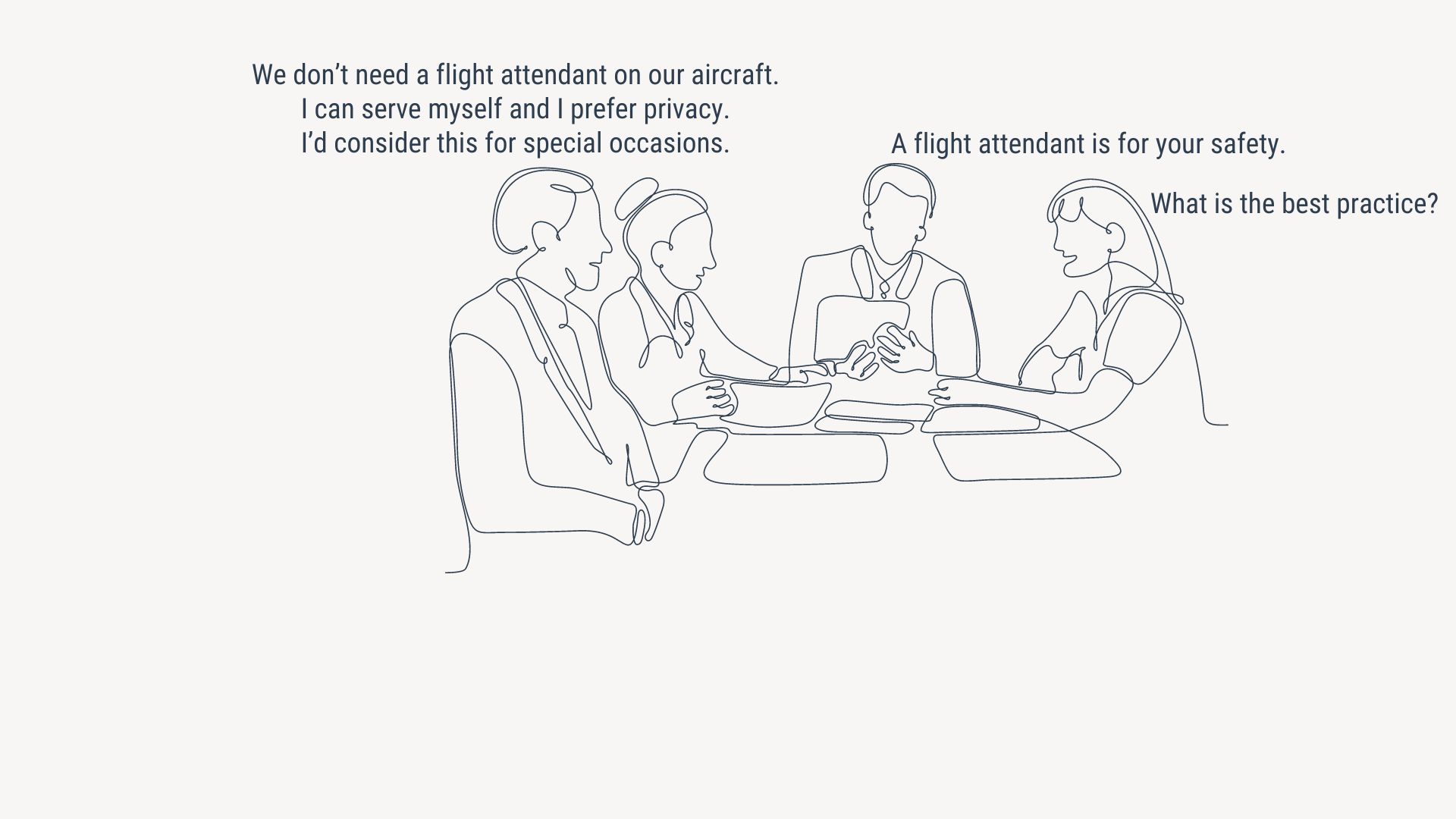

The application and use of Flight Attendants (FAs) or Cabin Safety Attendants (CSAs) is commonly debated in business aviation. VanAllen ‘s recent LinkedIn poll results highlighted the range of policies associated with flight attendant usage. In summary, one-third of organizations use flight attendants all the time and one-third never use them.

Below, we offer a few policies and strategies below summarized as World Class, Best Practices, and FAA Compliance. We recommend aligning your practices with the risk appetite of your organization.
Cabin Safety Attendant – Roles & Responsibilities
The primary purpose of a CSA is to ensure the safety, security, and well-being of passengers during the flight. They are responsible for implementing and enforcing safety procedures, conducting pre-flight and post-flight cabin briefings and inspections, and providing assistance and guidance to passengers in emergency situations. CSA are trained to handle various emergencies, including rapid decompression, evacuations, and medical emergencies. Secondarily, the CSA is responsible for passenger service to create a comfortable and productive work environment. This can include meal service, technical support for cabin entertainment and Wi-Fi, and coordination with the flight crew on any route changes.
Policy #1: World Class
A World Class operation will have a CSA on every single passenger flight regardless the number of passengers, who is traveling, or length of flight. Additionally, key passengers, typically the most common travelers, have gone through aircraft specific emergency training in the event the CSA is incapacitated and unable to respond to an emergency egress. This is the highest level of risk mitigation.
Policy #2: Best Practices
A Best Practices operation will include a CSA on specific flights. Most commonly:
- Flights with only one passenger regardless of duration. This, in the event the sole occupant has a medical emergency.
- Any flight with 8 or more passengers.
- Any flight over sparsely populated terrain (more than 20 mins from an emergency airport).
- Any oceanic crossing or international flight (outside the contiguous US).
- Any flight with a client/customer on board.
In all cases, the most common/frequent passengers should have all completed aircraft specific emergency training.
Policy #3: FAA Compliance
According to the FAA under Part 91, a flight attendant is only required for any aircraft having more than 19 passengers. Reference: 14 CFR 91.533. This eliminates nearly all business aircraft as very few models can accommodate more than 19 passengers. The only exception being the Gulfstream G550. For any G550 passenger load of 10 or more passengers, it is required to have a crew member is trained on evacuation procedures. The pilot and co-pilot cannot serve this function.
Want to learn more about identifying and developing policies around unique aviation risks? Contact VanAllen to learn more about our Performance Review and Risk Review services.
For additional resources about this topic, visit the NBAA Flight Attendants Committee or the Flight Safety International Cabin Safety Training for crew members or executive passengers.
